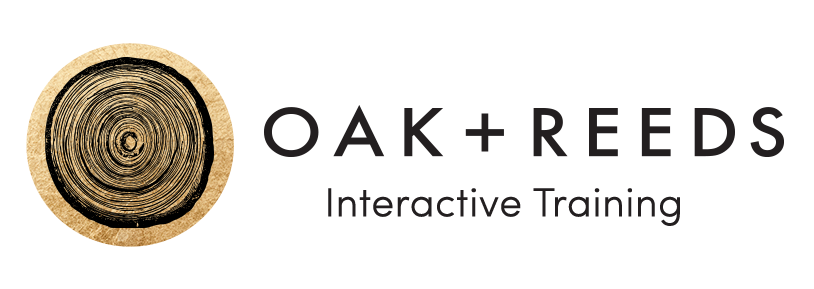In every monthly newsletter, I’ll be introducing you to simple group exercises you can facilitate on your own. This month, we’re looking at how to demonstrate the power of “Yes, And, And” to your teams. The following exercise is something you can do to kick off your next team meeting.
Skill: Practicing “Yes, And, And”
Exercise: “I’m a Tree”
Time: 5-7 minutes
# of People: 10-15
Instructions
At the beginning of your next team meeting, gather attendees together in a standing circle. Let them know that you’re doing a warm-up exercise to get collaborative juices flowing. To introduce the exercise, say:
“This exercise is called, “I’m a tree.” It sounds silly but it’s a really effective seven-minute warm-up for setting a collaborative tone in this meeting.
Let’s form a circle. I’ll start the exercise by walking into the circle and pretending to be a tree by saying “I’m a tree!” Next, someone will join me in the circle, add something to my tree and say something like “I’m a bird!” and place an imaginary bird on one of my “branches.”
Then a third person will add something to the scene, for example, “a park bench under the tree.”
Once that third person has entered the circle, we prepare to repeat the exercise in the following way: The original person in the scene, in this case, me, the “tree,” will take something out of the circle by saying “I’ll take the bird,” leaving only “the park bench.” That person stays and continues to be the same thing. They’ll start a new sequence by saying “I’m a park bench.” Then someone new adds something to the bench scene, (i.e. “I’m a person sitting on the bench”) and off we go!”
Facilitation
The group will be reticent and slow to participate at first, but will quickly get excited by the possibilities they can create together. Encourage people to jump in whenever they have an idea, even if it’s not perfect, in order to support the other players.
Continue repeating these steps for 5-7 minutes or until you feel the group has reached a high-energy stopping place in which to begin the debrief. If you’re short on time, skip the debrief and go directly into the rest of your agenda.
Debrief Questions
What was the most surprising supporting idea presented? What was an obvious one that you would’ve guessed? Does it matter how obvious the ideas are?
What made it hard to add to a particular idea? Which ideas were easy to build off of?
Were you stuck at any time? How did that feel? What did you do to get unstuck?
Takeaways
This is “Yes, And, And” in action. Adding a third idea opens up opportunities for unexpected, creative solutions. In the context of this exercise, the group is building out an interesting scene. In a work situation, it means adding additional opinions, ideas, and solutions into an idea-generation process.
It’s tough being the first person out in the circle waiting for someone to come in to support them. Finding ways to be the “second” to someone’s idea in a real setting is a great way to support teammates or clients and create a collaborative atmosphere.
Be on the lookout for people that are great at “seconding” and those that prefer adding the “three” for a big laugh. Typically the funniest part of this exercise is the third idea added (see: rule of threes), but that doesn’t mean it was the most important. Often, the second idea won’t be that funny, but a clear and deliberate choice will dictate the entire direction of the scene and set up a hilarious “three.”
Try doing this with more than three people adding to a scene (Remember: “If you can include three you can include seventeen.”)

